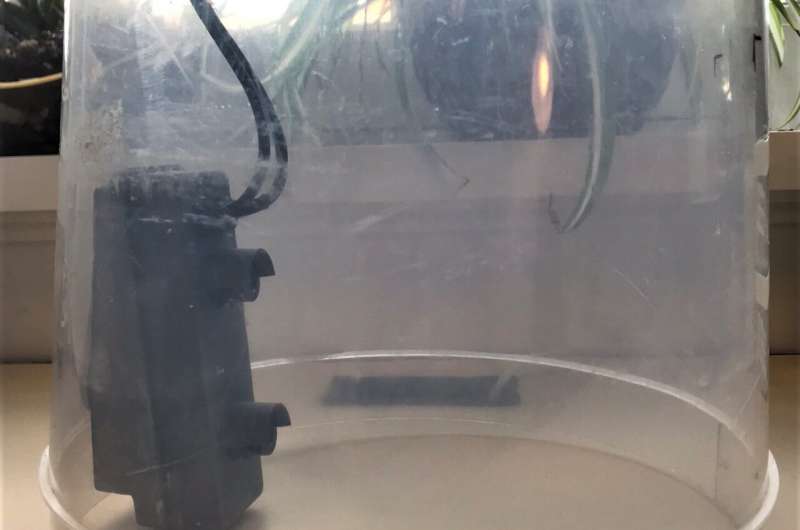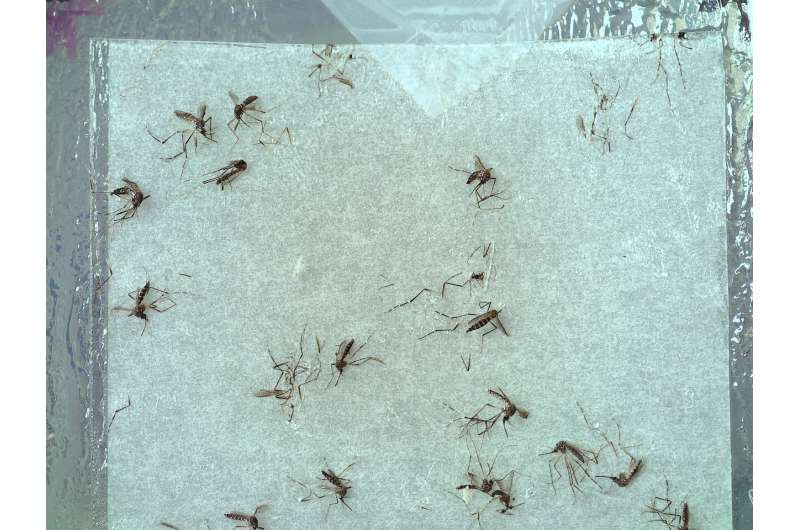Low-cost imaging system poised to provide automatic mosquito tracking

Mosquito-transmitted diseases such as malaria, dengue and yellow fever are responsible for hundreds of thousands of deaths every year, according to the World Health Organization (WHO). A new low-cost imaging system could make it easier to track mosquito species that carry disease, enabling a more timely and targeted response.
"A remote system like ours can dramatically reduce the labor needed to monitor mosquitos in a given area, thus greatly increasing the capability to do more monitoring," said research team leader Adam Goodwin from Johns Hopkins University. "If you can provide more mosquito data, then you will more quickly catch outbreaks and save more lives."
In The Optical Society (OSA) journal Biomedical Optics Express, Goodwin and colleagues' paper is part of a feature issue on Optical Technologies for Improving Healthcare in Low-Resource Settings. In the paper, they describe the new system, which is designed to transmit images from inside a mosquito trap that are detailed enough for entomologists to distinguish mosquito wing patterns and the color of scales, features that indicate whether a mosquito is a species that carries disease. This information can be used to plan interventions that work best against that species.
"The new system is a classic application of an internet of things (IoT) device," said Goodwin. "It could eventually be paired with computer vision algorithms to automatically determine species and provide that information to public health systems."
Developing a remote imaging trap
In the many areas of the world where mosquito-transmitted disease is problematic, understanding which mosquito species are present in what numbers requires continually trapping mosquitoes at multiple locations. A worker must then drive around a county or region to drop off and pick up hundreds of traps per week and bring the specimens back to the lab to be identified under a microscope.
"Our new optical system can be placed inside a traditional mosquito trap to provide remote surveillance of the abundance, diversity and distribution of mosquito species," said Goodwin. "Using imaging is particularly appealing because as long as image quality is high, several mosquitos could be identified from an image at once."

When designing the system, the researchers focused on the ability to accurately identify Aedes aegypti mosquitos, which can spread Zika, dengue, chikungunya and yellow fever. This invasive species is native to Africa but has established itself in many parts of the world, including North America, Europe and Asia. They say that same approach could be applied to other insects as long as there is a way to capture and reliably image it.
Using optics and camera sensors that are readily commercially available, the researchers optimized their optical setup to achieve a resolution that balanced the need to image many mosquitos at once with the ability to see enough details to identify the mosquito species.
"Our new system would be particularly useful in monitoring Aedes aegypti in hard to reach areas and at commercial ports of entry where invasive species can be brought from other countries," said Goodwin. "It could also expand current surveillance operations for regions already monitoring local populations of Aedes aegypti."
In most cases, public health systems only need to determine if there are changes in the number or type of mosquitos from day to day or hour to hour, not minute to minute. This means a camera sensor would only need to be turned on a few times a day at most. This would keep the power consumption within the range feasible for an internet-connected device.
Testing the system
To test the new system, the researchers compared entomologists' ability to classify specimens from a digital microscopy image and images from the remote imaging system. There was not a significant difference in their capabilities between the image types. Although the entomologists didn't perform well on species classification for either the microscopy images or the remote system images, they did very well on genus classification.
"Entomologists are not used to identifying specimens from an image because they normally have the specimen in person and manipulate it with tweezers under a microscope," said Goodwin. "However, recent work using convolutional neural networks to classify mosquitos from an image does show promise."
The researchers plan to continue optimizing the remote trap and plan to integrate computer vision algorithms as well as internet-connectivity into the system. "This would enable species information to be sent directly to the public health system for decision-making," said Goodwin. "This is where we think the system will really shine."
More information: Adam Goodwin et al, Development of a low-cost imaging system for remote mosquito surveillance, Biomedical Optics Express (2020). DOI: 10.1364/BOE.382391




















